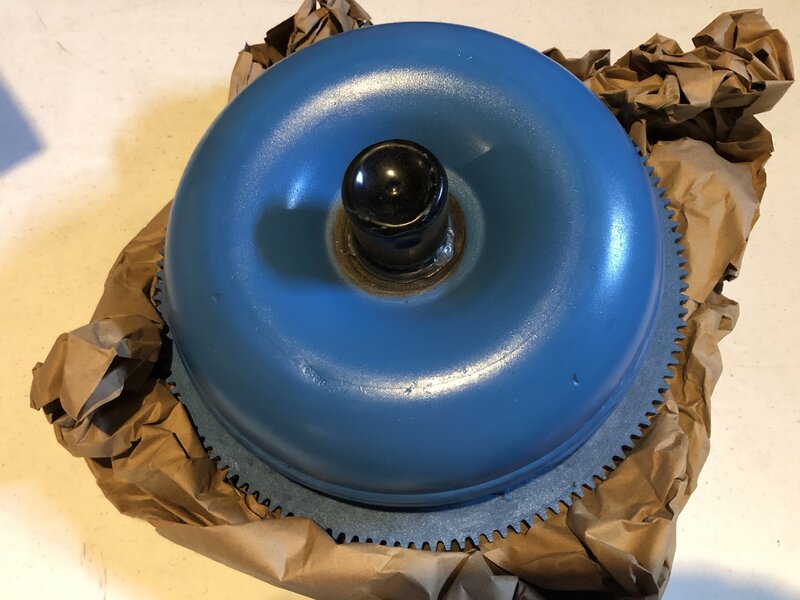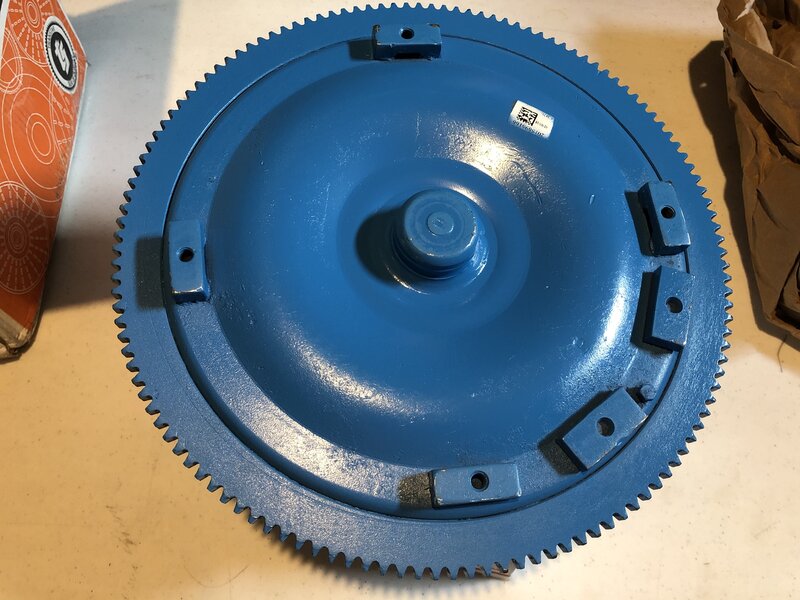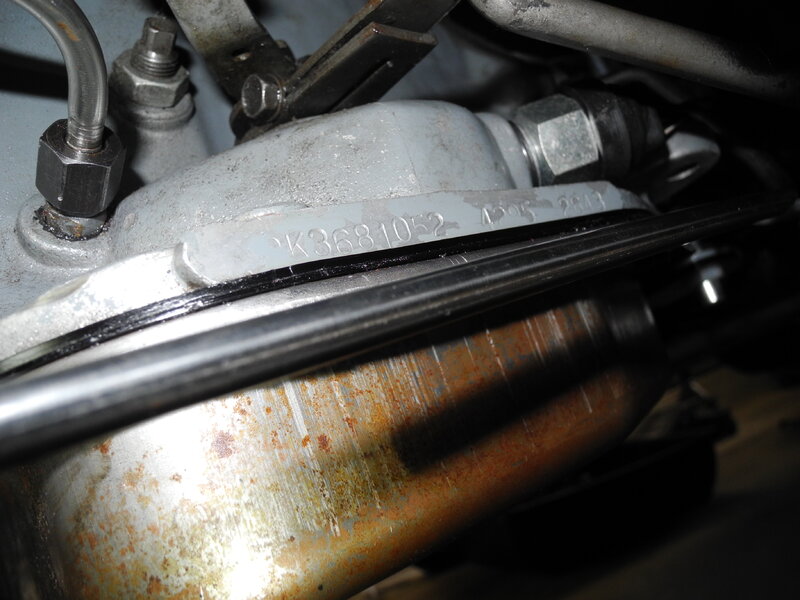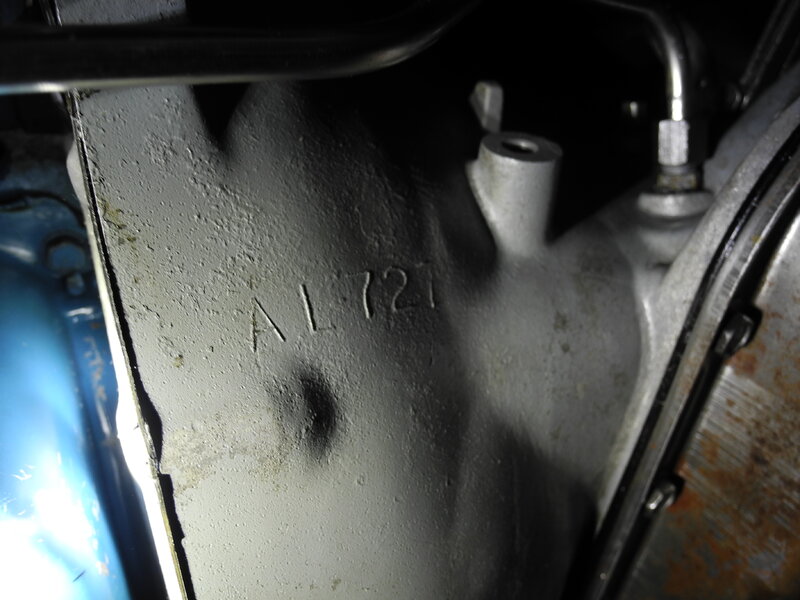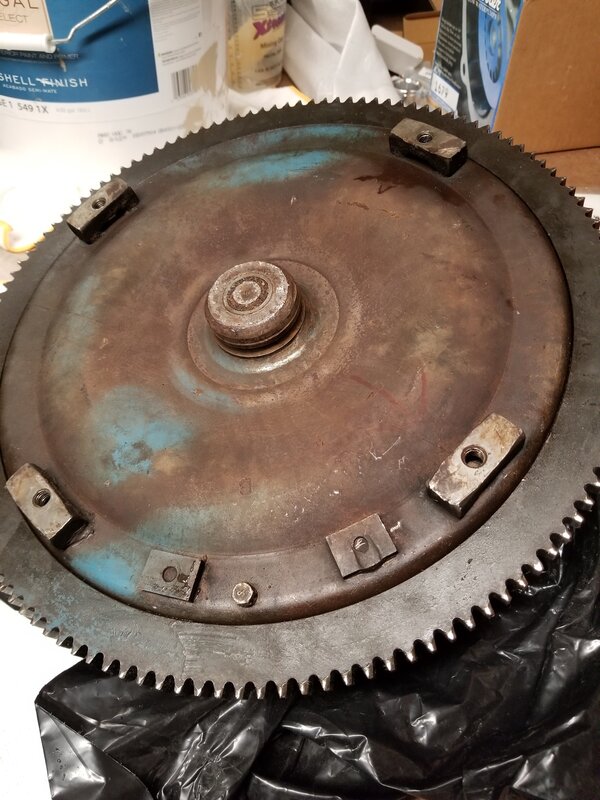The 1972 parts catalog shows the following converter numbers:
318 w/904 trans: 2843586
318 w/727 trans: 2801762
340 forged crank: 2801764
340 cast crank: 3681641
360 (all 360s were cast crank): 3410918
400 forged crankshaft (1972 only): 2843586 (same as 318)
400 cast crankshaft: 3515282
400 w/four-barrel carb (HP): 3681145
440 std. perf: 2843586 (same as 318)
440 high perf: 3410839
Applications listed in italics are externally balanced. 1972 was the only year the 400 had a forged crank, and even then, not all of them did (4V and HP only). 440HP was exernal balance due to the Six Pack rods; it was still a forged crank. It's also worth mentioning that in later years, high-stall 11" converters and low-stall 10" converters both becamse available. High-stall converters during this era actually had a decal on them to identify them as such.
No matter; Raplh's converter has the cast 340 counterweights.
I do know that the weights are a little undersized from the factory 360 converter, maybe they split the difference? In any event, I have the converter for sale locally and have relisted it as 360 only. Thanks for the info
They're not a "little" undersized--the difference is enormous. There's no "splitting the difference" possible. The 360 uses nearly 5 times more external counterweight than the cast 340 on the flywheel alone. The 360 damper also has more counterweight than the cast 340's, hence the cast-in warning.
I'm not picking on you, Montclaire. I'm just trying to correct bad information and outright supposition regarding the balance issue. I don't want Ralph, you, or anyone else to destroy a freshly-built engine because "I heard it'll work" or someone told you it would.
Let's compare directly. The following information regards flywheels but the balance difference is exactly the same as it would be on a torque converter.
Here's the diagram for modifying a neutral balance flywheel for use with a cast-crank 340:
This is the diagram to do the same thing for a pre-Magnum 360:
The drill bit required for the 360 is over half an inch larger in diameter, and three holes are required compared to the cast 340's much-smaller singular hole. The weight's distance from center has an effect, which is why it's stated in ounces per inch. It's also why the weight difference doesn't appear as drastic on the torque converters. You simply can't remove enough weight from a flywheel around the outside edge. Weights can be welded on wherever necessary as long as there's room.
If you take an externally-balanced converter, bolt the flex plate to it, and set it on its snout so you're looking at it from the engine side, the weights will be welded on 180° from where the holes are drilled in the above diagrams. Removing weight from one side has the same balancing effect as adding it to the other. B&M's 360 flexplate exploits this, and Chrysler used the same trick on later '70s 360 balancers: They have a large concentric groove in the weight opposite of where the counterweight was in '71-'72. Junkyard speed secret.





